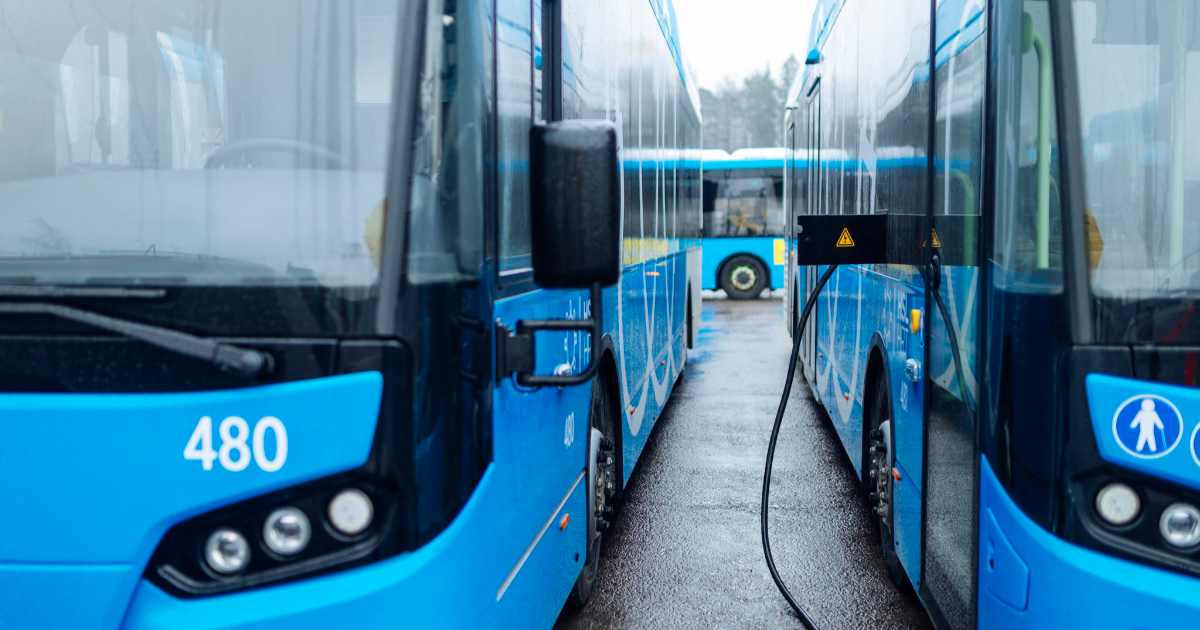Making public vehicle procurement environmentally friendly – draft bill circulated for statements

The purpose of the proposed act is to increase the proportion of low- and zero-emission vehicles in the public sector's procurement of vehicles and transport services. The act will transpose the EU Clean Vehicles Directive into national law. The Ministry of Transport and Communications requests statements on the draft bill by 8 February 2021.
As presently drafted, the act will apply to publicly procured vehicles and services, such as school transport, refuse collection, bus services for local traffic, as well as transport provided by Kela, the Social Insurance Institution of Finland. The act, which will enter into force in August 2021, will help reach the goal of halving transport emissions by 2030, as set out in the Government Programme.
"This act will ensure that the bulk of new vehicles and transport services procured in the public sector will be environmentally friendly and energy-efficient. During the drafting of the bill, special attention was focused on the regional fairness of national transposition. Legislation on public procurement forms part of the roadmap for fossil-free transport," explains Timo Harakka, Minister of Transport and Communications.
The new legislation will promote a continued increase in the proportion of low- and zero-emission vehicles. The use of fossil fuels will decrease, while the use of alternative fuels, such as electricity, gas and biofuels, will increase. The drafting process also involved a working group tasked with the assessment of alternatives for national legislation, with an eye to geographical differences and cost-effectiveness.
Environmentally friendly vehicle procurement 2021-2030
The minimum targets are specified for three different categories of vehicles: namely, passenger cars and commercial vehicles, trucks, and buses, as well as for two procurement periods, that is, 2 August 2021-2025 and 2026-2030. The targets apply to vehicle and transport services procured by the public sector, including government agencies, publicly owned undertakings and municipalities.
The targets will apply when a contracting unit purchases, rents, leases, hire-purchases or procures certain transport services. The Directive only applies to new procurements.
Under the Directive, to be classified as environmentally friendly, a passenger car or commercial vehicle must emit no more than 50 g of CO2/km until the end of 2025, and 0 g of CO2/km from 2026 onwards. What this means in practice is electric vehicles and, until the end of 2025, plug-in hybrids. During both periods, Finland must ensure that at least 38.5 per cent of passenger car and commercial vehicle procurement is environmentally friendly. As proposed in the draft bill, the minimum shares for passenger cars and commercial vehicles, as well as trucks could differ depending on the region in which the municipal contracting unit is located. This is based on the need to take into account regional differences related to, for example, distances, economic resources, the availability of recharging points and the taxi markets. Other contracting units would be subject to the minimum targets specified in the Directive.
Environmentally friendly trucks are vehicles that run on alternative fuels, such as electricity, hydrogen, gas or biofuel. Finland must ensure that 9 per cent of trucks procured in the first period and 15 per cent of trucks procured in the second period are environmentally friendly. As with passenger cars and commercial vehicles, the minimum targets for municipal contracting units could be staggered to take into account regional differences. In other words, municipal contracting units located in regions with higher target levels would be required to meet tighter requirements than those located in regions with lower target levels. Further details are available in the appendices to the draft bill. Other contracting units would be subject to the minimum targets specified in the Directive.
Environmentally friendly buses are vehicles that run on alternative fuels, such as electricity, hydrogen, gas or biofuel. Finland must ensure that 41 per cent of buses procured in the first period and 59 per cent of buses procured in the second period are environmentally friendly. These requirements only apply to buses used in local traffic. Moreover, half of the environmentally friendly vehicles procured during both periods must be fully electric. This translates to 20.5 per cent of buses in the first period and 29.5 per cent in the second period. The minimum target for fully electric vehicles has been staggered to take into account regional differences.
What falls outside the scope of the Directive?
Finland plans to fully implement the exemptions regarding special-purpose vehicles. As drafted, the act will not apply to coaches used for long-distance transport nor to vehicles used in agriculture and forestry or to two- and three-wheeled vehicles. Finland also plans to exempt emergency vehicles, vehicles used by the armed forces and vehicles used on construction sites from regulation.
Next steps
A hearing on the government bill will be held on 28 January 2021. The draft bill will be circulated for statements until 8 February 2021. The targets specified in the Directive must be applied from 2 August 2021 onwards.
The act on environmentally friendly vehicle procurement is part of the roadmap for fossil-free transport.
Additional information:
Interview requests for Minister Timo Harakka: Susanna Niinivaara, Communications Director, tel. +358 400 816 187, susanna.niinivaara(at)lvm.fi
Päivi Antikainen, Director of Unit, Ministry of Transport and Communications, tel. +358 50 382 7101, paivi.antikainen(at)lvm.fi, Twitter @PaiviAntikainen
Eleonoora Eilittä, Senior Officer, tel. +358 295 34 2089, eleonoora.eilitta(at)lvm.fi, Twitter @EleonooraE
Press release of 8 November 2019: Preparation of procurement legislation for clean vehicles and transport services is starting
Lausuntopalvelu.fi: Request for statements on the draft government proposal for an act on the environmental and energy-efficiency targets for vehicle and transport service procurement (in Finnish)
Gateway to Information on Government Projects: Government proposal for an act on the procurement of clean and energy-efficient road transport vehicles (LVM051:00/2019) (in Finnish)
European Commission: Clean Vehicles Directive



